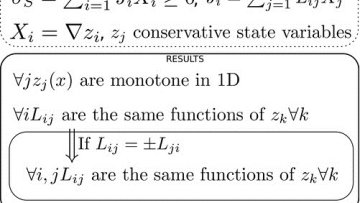Acoustic and hyperelastic metamaterials – stretching the truth?
Abstract
Transformation theory has long been known to be a mechanism for
the design of metamaterials. It gives rise to the required properties of the
material in order to direct waves in the manner desired. This talk will
focus on the mathematical theory underpinning the design of acoustic and
elastodynamic metamaterials based on transformation theory and aspects of
the experimental confirmation of these designs. In the acoustics context it
is well-known that the governing equations are transformation invariant and
therefore a whole range of microstructural options are available for design,
although designing materials that can harness incoming acoustic energy in
air is difficult due to the usual sharp impedance contrast between air and
the metamaterial in question. In the elastodynamic context matters become
even worse in the sense that the governing equations are not transformation
invariant and therefore we generally require a whole new class of materials.
In the acoustics context we will describe a new microstructure that consists
of rigid rods that is (i) closely impedance matched to air and (ii) slows
down sound in air. This is shown to be useful in a number of configurations
and in particular it can be employed to half the resonant frequency of the
standard quarter-wavelength resonator (or alternatively it can half the size
of the resonator for a specified resonant frequency) [1].
In the elastodynamics context we will show that although the equations are
not transformation invariant one can employ the theory of waves in
pre-stressed hyperelastic materials in order to create natural elastodynamic
metamaterials whose inhomogeneous anisotropic material properties are
generated naturally by an appropriate pre-stress. In particular it is shown
that a certain class of hyperelastic materials exhibit this so-called
“invariance property” permitting the creation of e.g. hyperelastic cloaks
[2,3] and invariant metamaterials. This has significant consequences for the
design of e.g. phononic media: it is a well-known and frequently exploited
fact that pre-stress and large deformation of hyperelastic materials
modifies the linear elastic wave speed in the deformed medium. In the
context of periodic materials this renders materials whose dynamic
properties are “tunable” under pre-stress and in particular this permits
tunable band gaps in periodic media [4]. However the invariant hyperelastic
materials described above can be employed in order to design a class of
phononic media whose band-gaps are invariant to deformation [5]. We also
describe the concept of an elastodynamic ground cloak created via pre-stress
[6].
[1] Rowley, W.D., Parnell, W.J., Abrahams, I.D., Voisey, S.R. and Etaix, N.
(2018) “Deepening subwavelength acoustic resonance via metamaterials with
universal broadband elliptical microstructure”. Applied Physics Letters 112,
251902.
[2] Parnell, W.J. (2012) “Nonlinear pre-stress for cloaking from antiplane
elastic waves”. Proc Roy Soc A 468 (2138) 563-580.
[3] Norris, A.N. and Parnell, W.J. (2012) “Hyperelastic cloaking theory:
transformation elasticity with pre-stressed solids”. Proc Roy Soc A 468
(2146) 2881-2903
[4] Bertoldi, K. and Boyce, M.C. (2008) “Mechanically triggered
transformations of phononic band gaps in periodic elastomeric structures”.
Phys Rev B 77, 052105.
[5] Zhang, P. and Parnell, W.J. (2017) “Soft phononic crystals with
deformation-independent band gaps” Proc Roy Soc A 473, 20160865.
[6] Zhang, P. and Parnell, W.J. (2018) “Hyperelastic antiplane ground
cloaking” J Acoust Soc America 143 (5)


